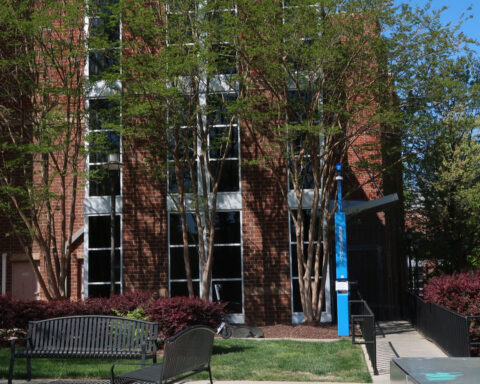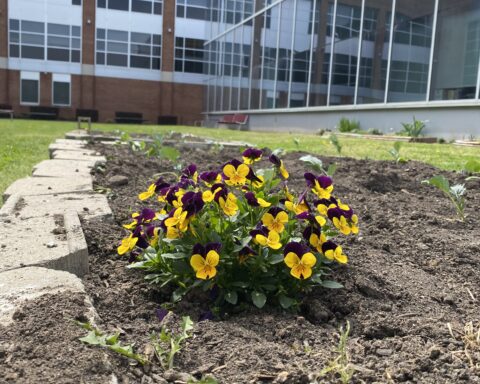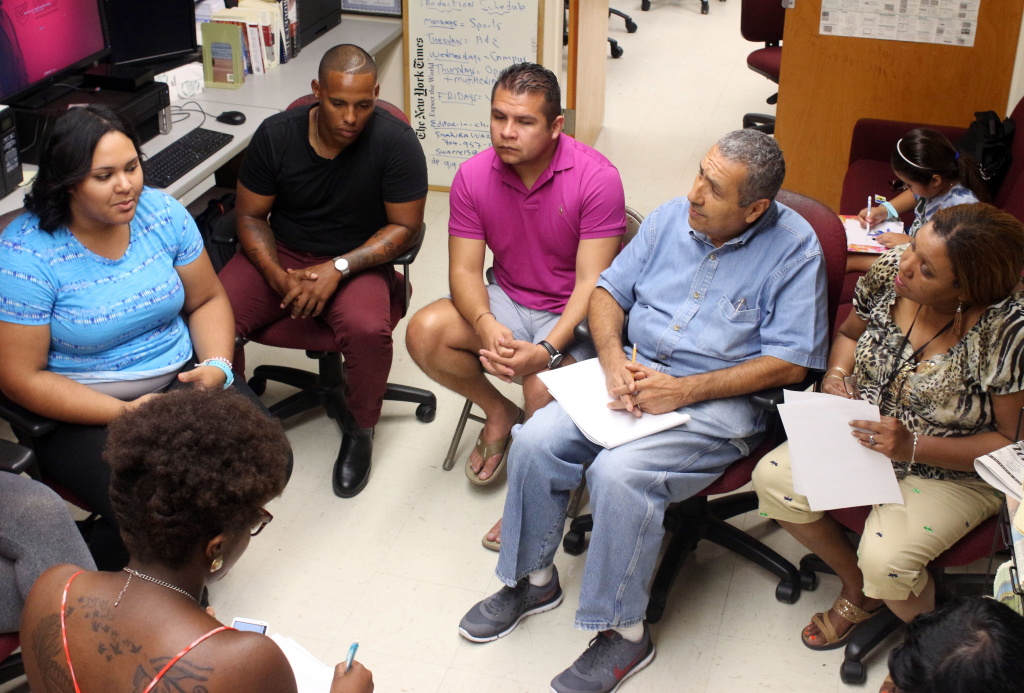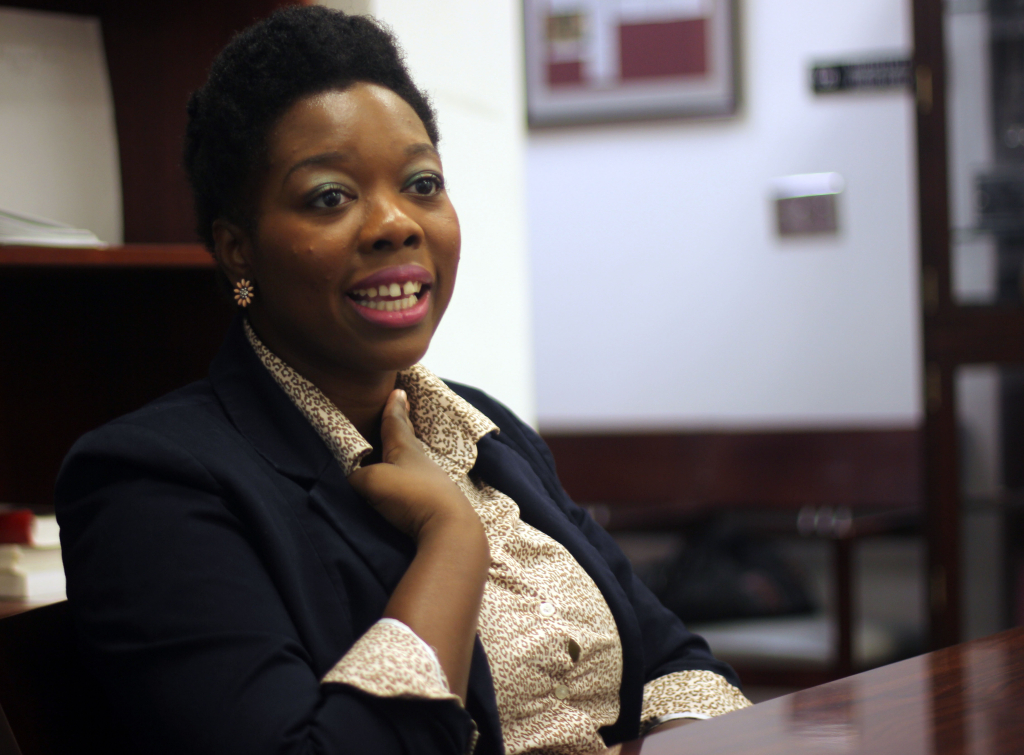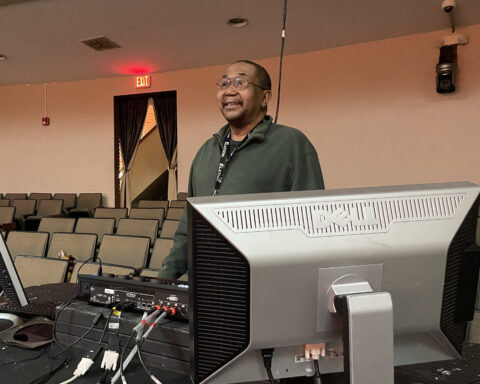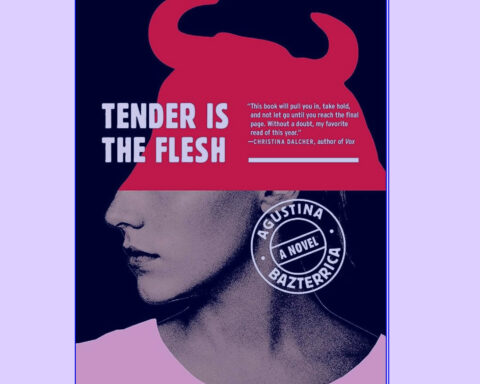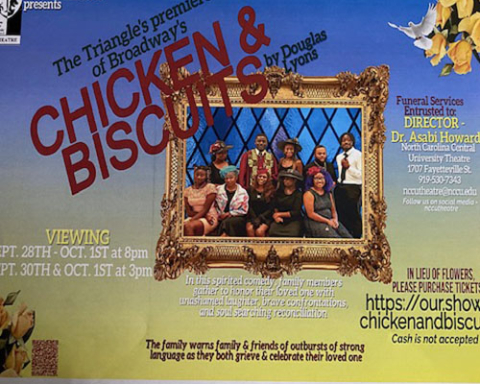It’s not often art students see their professors’ work, but for a few weeks this August and September, students, faculty, staff and locals were able to do just that.
The Art Department Faculty Exhibition at N.C. Central University’s Art Museum display work by art professors Connie Floyd, Melvin Carver, Achamyeleh Debela, John Hughley and Chad Hudges, along with work by Kenneth Rodgers, NCCU’s art museum director.
Each professor approaches his work differently.
Floyd’s work, as seen in his painting “Kymber Lee” (2015) is inspired by family photographs and experiences. He also strives to create art using methods such as symbolic form repetition and recycled collage pieces, as seen in “Recycled Heritage” (2015).
Hughley has reworked his earlier water-based artworks digitally, as seen in his “In Celebration of Ancestral Spirits” (n.d.).
“In my work, I attempt to explore my African-American and African heritage,” Hughley wrote in his artist’s statement. “Many of my works appear to be fragments of African textiles and patchwork quilts, but do not strictly follow designs found in African textiles and patchwork quilts.”
Hughes describes his approach as creating “tablescapes” using brushwork and marks to create expressionistic still lifes. His oil portrait, “Star Bottle with Goblet,” is a colorful array of glass jars in various shapes.
Rodgers’s focus is on portraits of the prominent and not-so-prominent, often members of his own family. His mother in “Artist’s Mother” (n.d.) and grandfather in “Grandpa Claude” (n.d.) are portrayed in a “highly composed,” but “informal” or “idiosyncratic” manner. Rogers said he draws his inspiration from working with dramatic lighting and from experimental images from the works of James Abbott McNeill Whistler.
Debela describes his work, as seen in “Prayer in Color” (2007) as “a series of mental and physical exercises whereby conceptual issues as ideas are manifested and/or revealed.” His work is “filtered as color, form and texture” and appears sometimes “as symbolic and abstract” and sometimes as “nightmarish, dreamy, mystic and exiting.” He uses his memories and his experiences as his inspiration.
Debela believes it’s very important for students to see the works of those who teach them, because art represents humanity.
“I think it’s important for artists to reflect on who they are and who they have become,” Debela said. “I’d like for us to focus on the qualities of us as human beings. Not what makes us different, but what we have in common. If we can work from that, any creative works that we do should also reflect us.”
Carver stresses the influence teaching has had on his development as an artist, explaining that he has “had the opportunity to grow and develop” while teaching students “to use art media to solve communication problems.” He marks a distinction between “fine art” and his work, which he describes as solving “someone else’s visual problems.” In addition to designing NCCU’s ceremonial mace, Carver has applied the principles of graphic design to calendars, brands and books.
The faculty exhibition closed on September 4.


